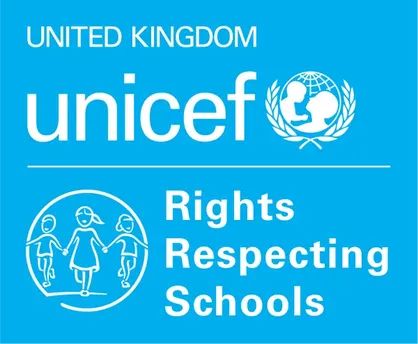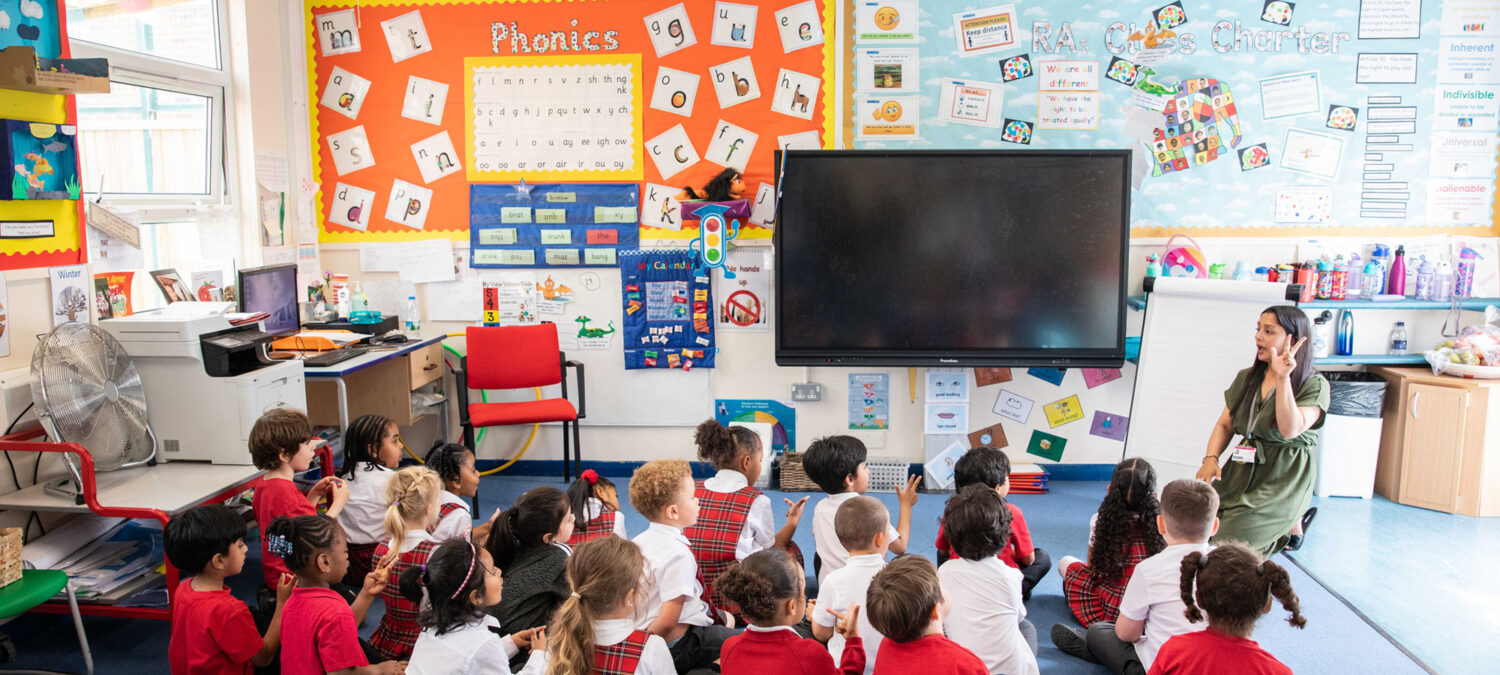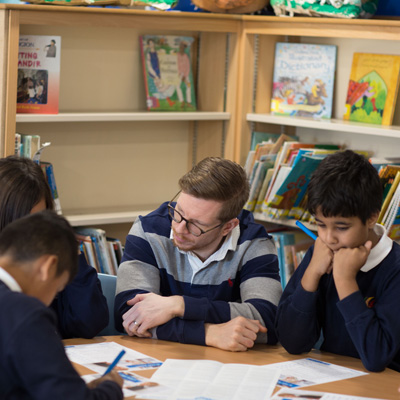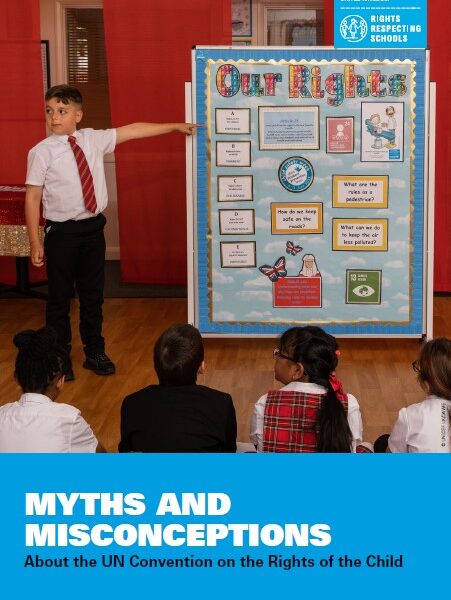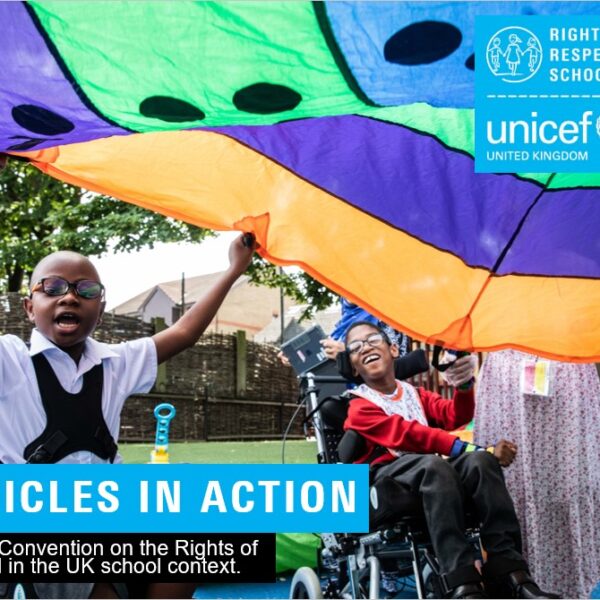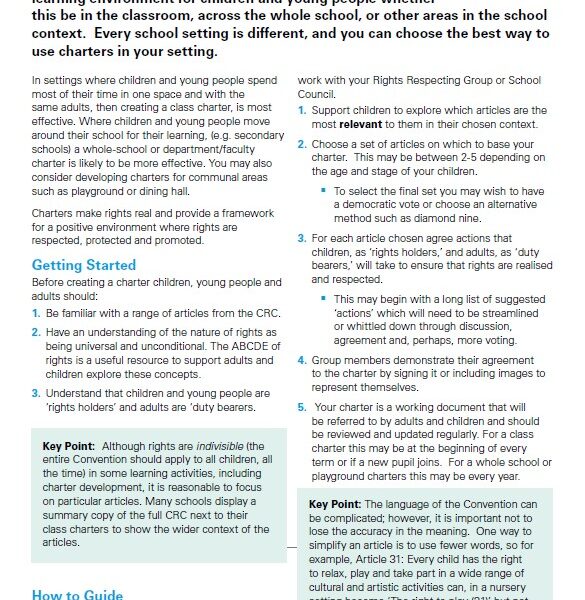In a Rights Respecting School, children, young people and the school community learn about children’s rights together, putting them into practice every day.
The Award is not just about what children do but also, importantly, what adults as duty bearers do for children’s rights. This page will support you to consider how you can create a classroom environment where rights are learned, lived and promoted.
The RRSA Outcomes framework is based on three strands of human rights education.
Strand A: Teaching and learning about rights
The United Nations Convention on the Rights of the Child (CRC) is made known to children, young people and adults, who use this shared understanding to work for improved child wellbeing, school improvement, global justice and sustainable living. In a classroom this means:
- Adults will provide opportunities to promote the CRC and make links to articles across the curriculum, where relevant.
- Adults will support students to explore rights locally and globally through the curriculum and provide regular access to current affairs.
- Children and young people know they have rights, can claim them and understand the concepts that make rights real – see our ABCDE resource.
Strand B: Teaching and learning through rights
Actions and decisions affecting children are rooted in, reviewed and resolved through rights. Children, young people and adults collaborate to develop and maintain a school community based on equality, dignity, respect, non-discrimination and participation; this includes learning and teaching in a way that respects the rights of both educators and learners and promotes wellbeing. In a classroom environment this means that:
- Adults will work with children to consider children’s rights and respect for rights in the classroom creating a culture of dignity, equity and respect.
- Children and young people understand how adults support them to access their rights.
- Children and young people are actively involved in their own learning and making decisions in the classroom.
Strand C: Teaching and learning for rights
Children are empowered to enjoy and exercise their rights and to promote the rights of others locally and globally. Duty bearers are accountable for ensuring that children experience their rights. In a classroom environment this means that:
- Adults will understand their role in ensuring that children and young people are able to experience all of their rights.
- Adults will support the empowerment of children and young people through supporting them to become active global citizens and promote children’s rights.
- Children and young people have opportunities built into their learning to take action to support the rights of others.
What a Rights Respecting classroom might look, feel, sound like
Use the following questions to reflect on your current practice and help strengthen it from the perspective of children’s rights. This is not a checklist. The questions are prompts to get you thinking and talking about some elements of classroom practice that are typically developed in successful Rights Respecting schools.
- Is the CRC visible in the classroom? If a visitor came into class where else might they spot rights? Are displays linked to articles of the CRC where appropriate?
- Are rights-based charters, if you use them, visible in classrooms/around the school? See our latest guidance here.
- Do you include exploration of rights in your forward plans? Are rights mentioned in your learning objectives/plenary/reflection? Do children bring up the connections?
- Rights are universal. Do lesson materials and displays portray images and use language celebrating our diverse world?
- How do you promote children’s right to be safe? Are you making links explicitly to Article 19 and providing a range of opportunities for them to check in or share if they don’t feel safe?
- Do adults and children feel respected in the classroom? How do you know? Have you gathered pupil and adult views? How can you work collaboratively to strengthen mutual respect?
- Do you have opportunities to recognise and celebrate rights respecting actions, such as a Rights Respecting pupil of week?
- How do you create an inclusive environment for all students? How are fairness and equity talked about and experienced by all?
- Have you explored with children and young people the ways in which the classroom environment contributes to their safety and wellbeing?
- Children have a right to privacy. How do you ensure this is realised in the classroom and beyond?
- Are transitions between classrooms and to break and lunch respectful?
- Do you provide opportunities for discussion and debate? If not, identify opportunities to do this such as when engaging with news and current affairs, in PSHE and the curriculum more widely?
- Is there time and space to listen to children and young people’s ideas about their learning and to act on them?
- Are students communicating in ways that are inclusive and respectful towards everyone and challenges discrimination? Consider making links to Articles 2, 12 & 13.
- Do you feel confident in talking about rights and the CRC in relation to pupils’ learning? If not, do take a look at our e-learning offer.
- How do people speak to each other in your classroom? How do you ensure everyone is treated with dignity even when things go a little wrong?
